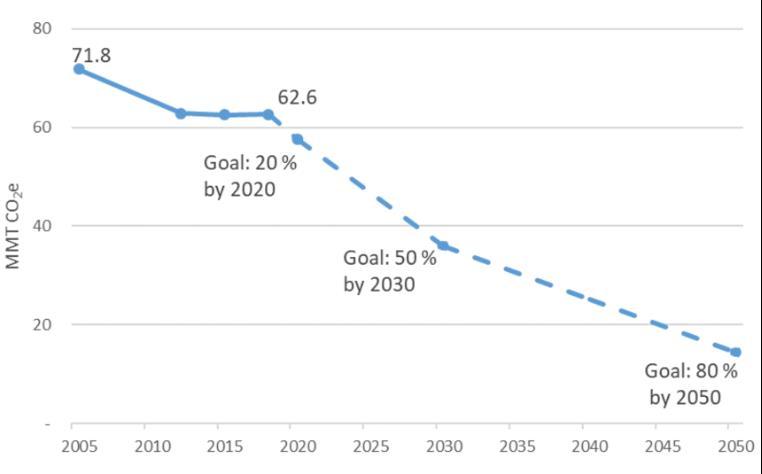
1 minute read
1
State-Level Studies Showing Need to Reduce Driving
California Air Resources Board 2017 Scoping Plan and SCS Targets Multiple air quality and climate planning studies by the California Air Resources Board (CARB)12, 13 have found that VMT reduction is essential to meeting the state’s greenhouse gas reduction targets – even with the most aggressive statelevel strategies in the country to improve fuel economy and introduce EVs. Per capita VMT of passenger cars must go down 16.8 percent by 2050 from pre-pandemic levels to meet the state’s climate target. Half of this decrease needs to happen by 2030.14
The state’s major metropolitan areas must reduce per capita passenger vehicle GHG emissions 19 percent below 2005 levels by 2035 from measures on top of state vehicle emissions and fuels standards (green dots in Figure 4). These state-required SB 375 Sustainable Communities Strategies (SCS) integrate transportation and land use planning to reduce VMT and also include some expanded local EV charging infrastructure strategies.15 Analysis of Emissions Reduction Pathways for North Carolina’s Transportation Sector
This study found that reducing VMT had the greatest potential among modeled strategies for mitigating the transportation sector’s carbon emissions to meet the state’s near-term 2025 climate target.16
Figure 4: California Statewide Trends and Targets for Vehicle Miles Traveled and CO2
Note: SCS = Sustainable Communities Strategy, a state-mandated GHG planning requirement in regional transportation plans.17
Source: Image from CARB. 2018 Progress Report: California’s Sustainable Communities and Climate Protection Act, page 4.
5








